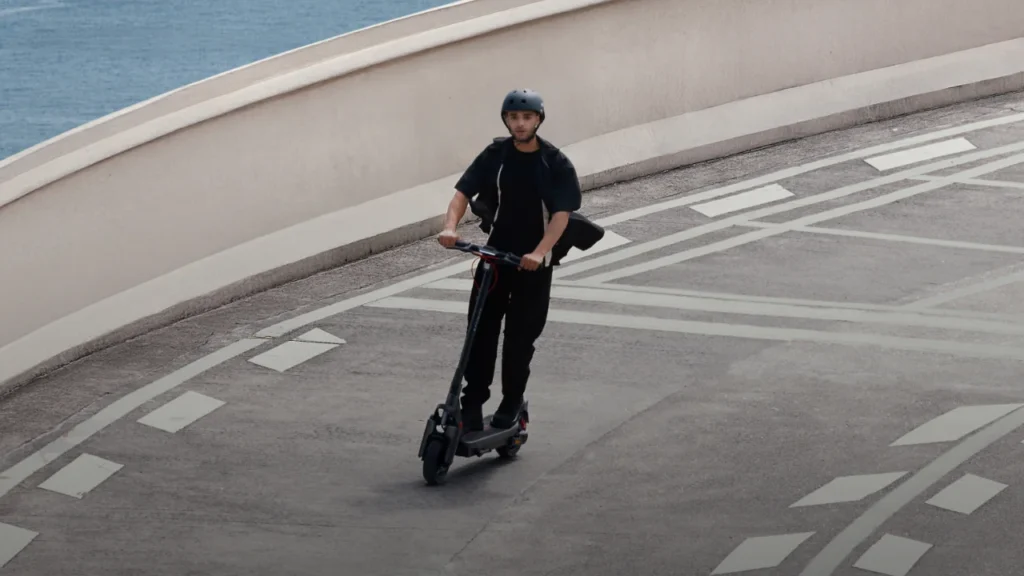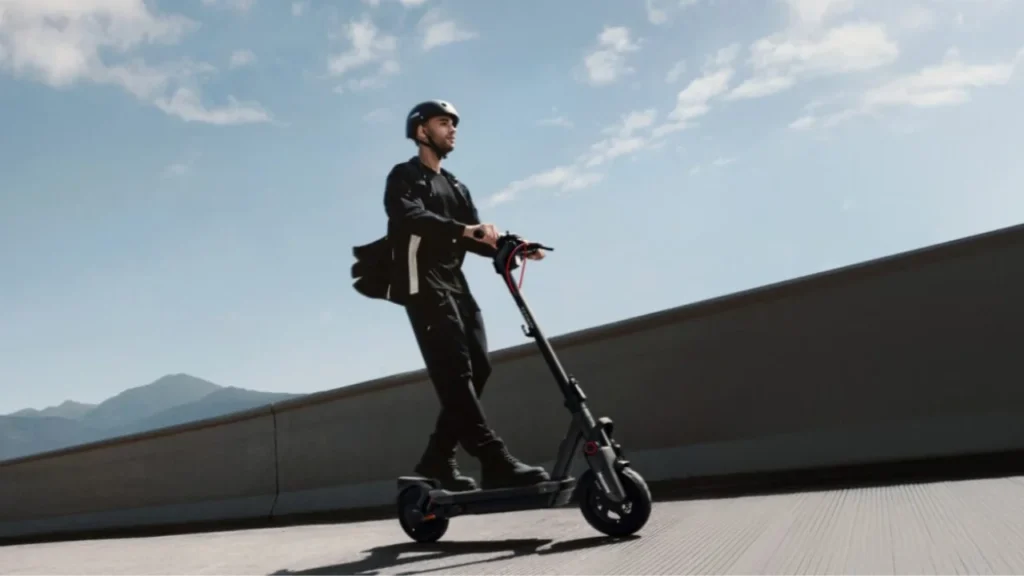Segway Ninebot brings a smart twist to electric scooters with its energy recovery mode. Have you ever wondered what energy recovery in Segway Ninebot is? it’s a clever feature that captures energy when you brake and recycles it—essentially turning your scooter into a mini power generator.
It’s not just about getting from point A to B anymore; it’s about doing it smarter and more efficiently. With energy recovery, every ride becomes a chance to conserve power and extend your scooter’s performance.
In this article, we’ll break down what energy recovery mode (also known as regenerative braking) really is. You’ll learn how it works, the real benefits it offers for daily riders, and a few limitations you should know about.
Ready to understand how your Segway Ninebot scooter can literally power itself while slowing down? Let’s explore how this innovative feature works and how you can make the most of it on every ride.
What is Energy Recovery in Segway Ninebot?
Regenerative braking—also known as the energy recovery system—is like a clever power-saving trick built into Segway Ninebot scooters. Instead of losing all that energy when you hit the brakes, the scooter captures it and stores it for later use. Think of it as recycling energy to help you ride farther without using more battery.
When you hear terms like “energy recovery” or “energy recovery mode” in a Segway Ninebot, it’s all about regenerative braking in action. As the scooter slows down, it doesn’t just stop—it actually regenerates power. That recovered energy is then fed back into the battery, making every ride a little more efficient.

How It Works – In Simple Words
Regenerative braking sounds complex, but it’s actually pretty simple when you break it down. Here’s what’s happening behind the scenes when you hit the brakes on your Segway Ninebot.
The Motor Reverses Roles
Your scooter’s electric motor usually uses energy to move you forward. But when you brake, the motor switches roles and acts like a generator. Instead of using power, it starts creating it—recycling the motion energy back into electricity. That’s how you recover some of the power usually lost during braking.
The Inverter Keeps Things Smooth
The inverter is like the system’s traffic cop. It controls how the electric current flows, making sure the switch between motor and generator happens smoothly. It helps the scooter slow down safely while managing the energy transfer.
Saving the Power for Later
Once the motor generates energy, it needs a place to go. That’s where the power electronics system steps in. It channels the recovered energy back into the battery so you can use it the next time you accelerate. It’s like banking energy for your next ride.
Customizing Energy Recovery Mode in Your Ninebot
You can fine-tune how your Ninebot scooter brakes by adjusting the energy recovery (or regenerative braking) mode. It’s like choosing how strong you want the braking to feel—low, medium, or high. This helps your scooter match your riding style more comfortably.
More Braking Power = More Energy Saved
The higher the brake intensity, the more power your scooter can recover when you slow down. Plus, stronger braking gives you better control when stopping. It’s a win-win if you want efficiency and safety.
How to Set It Up in the App
1. Open the Ninebot App
Launch the app on your phone. Make sure it’s installed and up to date.
2. Connect Your Scooter
Use Bluetooth to connect your scooter to the app.
3. Head to Settings
Tap the gear icon to open the settings menu.
4. Find Brake Intensity
Look for the section that lets you adjust brake intensity or regenerative braking.
5. Choose Your Level
Pick the level—low, medium, or high—based on how much braking force and energy recovery you want.
6. Save and Ride
Tap save, and you’re good to go. Your Ninebot will now brake exactly the way you prefer.
- Also Read: How to Fix Ninebot Scooter Charging Problems
Benefits You Get with Regenerative/Energy Recover Braking
Go Farther on a Single Charge
Regenerative braking helps stretch your battery life. Every time you slow down, it captures energy and feeds it back into the battery—giving you more range without needing to charge as often.
Smarter Energy Use
Instead of wasting energy as heat like traditional brakes, this system turns braking power into electricity. That means your scooter runs more efficiently and wastes less energy.
Less Wear on Your Brakes
Because regenerative braking does a lot of the stopping, your mechanical brakes don’t have to work as hard. This reduces wear and tear, so your scooter parts last longer—and you save money on maintenance.
Smooth Rides with Just One Pedal
You can accelerate and slow down with minimal effort. Regenerative braking makes your ride smoother and more intuitive, especially when cruising through traffic or busy streets.
No More Overheating
Traditional brakes can get hot with heavy use. Regenerative braking keeps things cool, preventing overheating and giving you a safer, more reliable ride.
Customize Your Braking
Many scooters let you adjust how strong you want the braking to feel. Whether you prefer a gentle slowdown or something sharper, you’re in control of how your scooter responds.
Eco-Friendly Travel
Regenerative braking turns movement into energy, reducing the need for frequent recharges. It’s a small but meaningful way to make your rides greener and more planet-friendly.
No More Jerky Stops
Forget sudden, jarring halts. With regenerative braking, you get smooth and gradual stops that make your ride more comfortable—especially on bumpy roads or in stop-and-go traffic.
Keeps Your Motor in Great Shape
This system doesn’t strain your scooter’s motor. There’s no direct wear and tear involved, so your motor stays healthy for the long haul. Fewer repairs, more rides.

Limitations & Drawbacks of Regenerative Braking
Energy Recovery Isn’t Great at Low Speeds
Regenerative braking doesn’t work well when you’re crawling along. In fact, at very slow speeds, it might actually use more energy than it saves. In those moments, it’s better to use your regular brakes or simply step off. Always put safety first.
Not All Scooters Handle It the Same
Every scooter brand—and even different models—handles regenerative braking differently. Some do it well, others not so much. Quality scooters won’t engage this system when the battery is full, which helps avoid potential damage. So, it’s important to know how your specific scooter behaves.
It’s Not a Strong Brake
Don’t count on regenerative braking as your only stopping power. It’s helpful, but not enough on its own. Always make sure your scooter has a strong mechanical or hydraulic brake to back it up.
Limited Energy Gains
While regenerative braking is efficient, it has limits. Scooters don’t generate a lot of kinetic energy, and batteries can only recharge so fast. So don’t expect a huge boost in range—maybe just a bit more than usual.
If you’re riding a lower-end Ninebot scooter, avoid using energy recovery alone at high speeds—especially when going downhill with a nearly full battery. It can lead to overheating in both the battery and the controller, which could cause performance issues or damage.
- Also Read: How to Activate Segway Ninebot KickScooter
Is Energy Recovery Braking Right for You?
Regenerative braking is a great bonus—especially on the higher-end Ninebot scooters. It makes your ride smoother and adds a layer of efficiency. But don’t worry—if your scooter brakes well without it, you’re still in good shape. It’s an upgrade, not a necessity.
Explore Segway Ninebot Scooters with Power Recovery
In short, regenerative braking adds real value to your ride. It helps extend range, reduces wear on mechanical brakes, and gives a smoother experience overall. Just remember—it’s not perfect, but it’s a smart feature to have.
Here are some Segway Ninebot models that support energy recovery:
- Max G30
- Max G2
- F30, F40, F65
- E45
- P65 & P100S (offer stronger recovery)
- GT1 & GT2 (top-tier recovery performance)
Conclusion
Regenerative braking in Segway Ninebot scooters is a real game-changer. It helps you go farther on a single charge, uses energy more efficiently, and gives you a smoother, more controlled ride.
With a little know-how and the Ninebot app, you can adjust how strong the energy recovery feels. It’s a simple way to make your scooter match your riding style and give you more control.
While regenerative braking is a great feature, it’s not perfect. It doesn’t work as well at very low speeds, and you still need strong mechanical brakes for full safety—especially on steep or fast rides.
With the right setup and understanding, regenerative braking turns your Segway Ninebot into a smart, eco-friendly ride that’s fun, efficient, and built for the long haul.